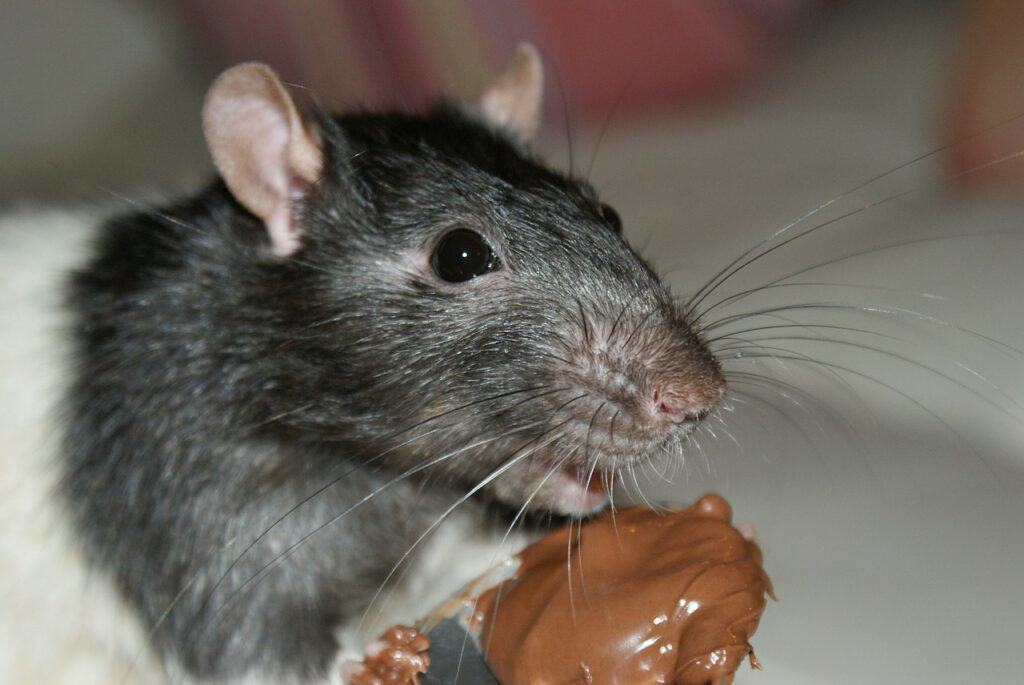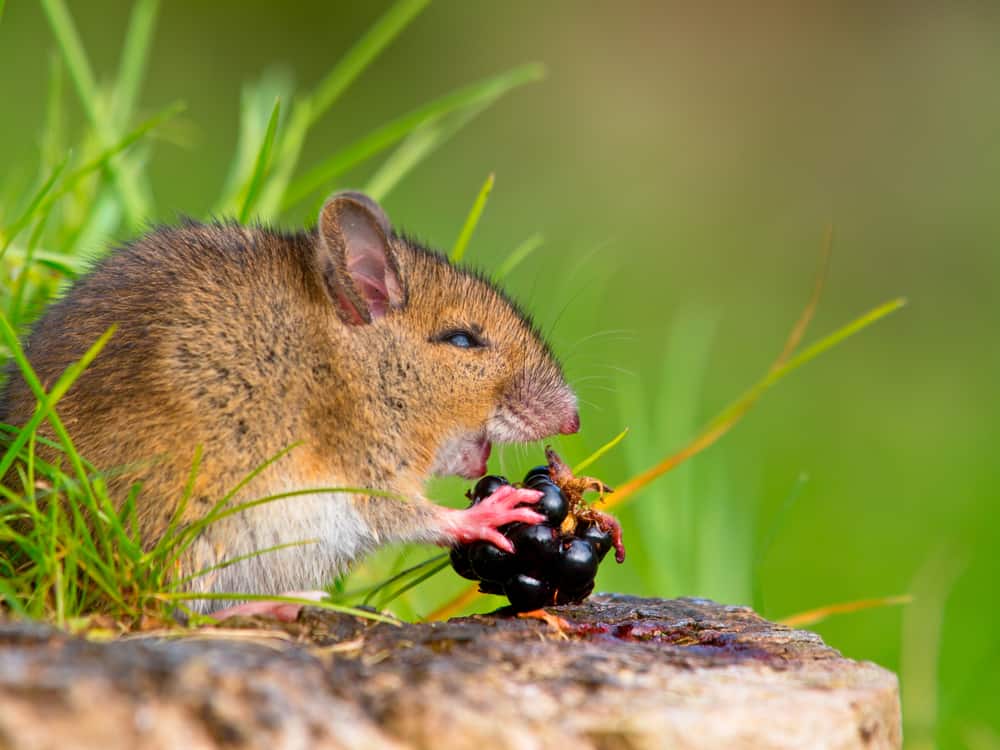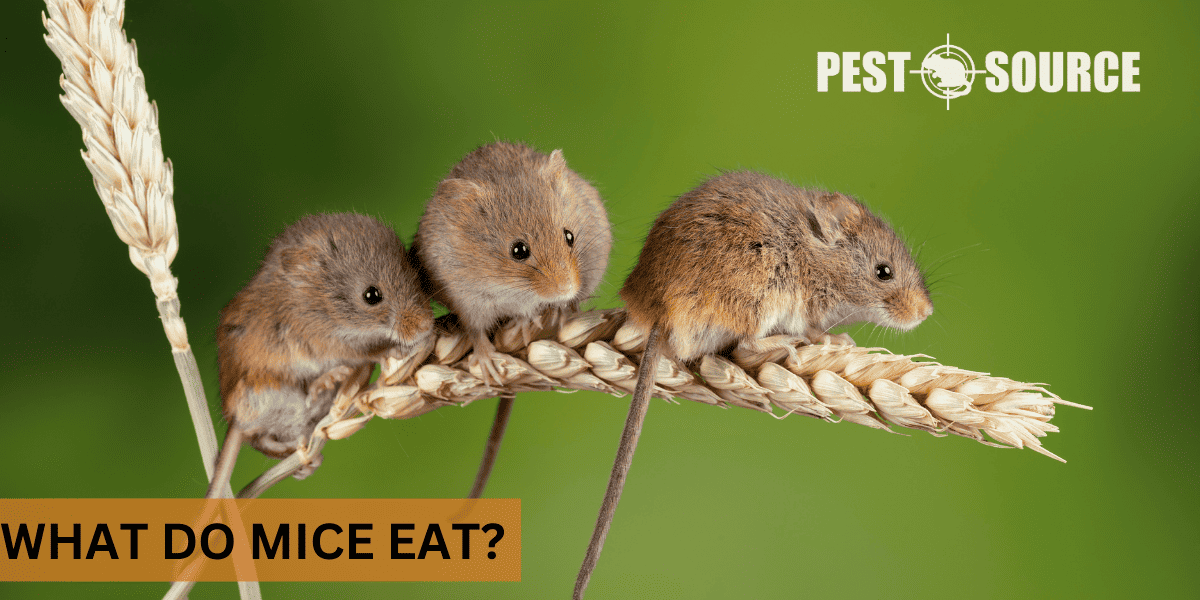Mice have a diverse diet, ranging from grains to sweets. This piece explores the varied dietary preferences of mice, providing insights into how and why these food sources attract them, which is vital information for both pest control and wildlife enthusiasts.
POINTS
- Mice are opportunistic omnivores, meaning they’ll eat a variety of foods depending on what’s available. Their diet typically includes seeds and grains, fruits, vegetables, insects, and high-protein foods.
- While mice will eat just about anything, they do have preferences. They tend to favor high-calorie items, carbs, and sugars, such as sweets, cereals, bread, pasta, and nuts.
- Contrary to popular belief, mice do not particularly love cheese. Research suggests that they prefer foods high in carbohydrates over those which are rich in fat or protein.
- Mice’s eating habits can cause significant problems in human homes. They can contaminate food supplies, chew through electrical wiring, and cause structural damage.
- The dietary habits of mice can vary depending on their environment and species. For instance, house mice in urban settings can consume a wide range of food, including trash, while wild mice may rely more on plant matter and insects.
Mice and Their Dietary Habits
What are the eating habits of mice?
For starters, you should know that mice are opportunistic eaters and they pretty much devour anything that comes their way. They’re scavengers, with diets that vary largely based on their environment and the food that’s available.
What defines a mouse’s diet?
The diet of a mouse is largely determined by its environment. In the wild, mice tend to eat plant matter and small insects. However, when they inhabit human homes, their diet becomes more varied, including grains, fruits, vegetables, and anything they can find in the pantry or trash.
Are mice omnivores?
Yes, mice are indeed omnivores. This means that they eat both plant-based and animal-based foods. Their diet can include fruits, seeds, stems, roots, fungi, insects, and occasionally meat. However, the specific diet can vary greatly depending on the species and habitat of the mouse.
How frequently do mice eat?
Mice tend to eat about 15 to 20 times per day, depending on their size and the availability of food. They are mainly nocturnal animals, so they do most of their feeding at night. However, they may also eat small amounts during the day. Their high metabolism requires them to eat frequently to sustain their energy levels.
Why is it important to know what do mice eat?
Knowing what mice eat is key to controlling and preventing an infestation. By understanding their dietary preferences, you can better protect your food supplies and identify the signs of a mouse problem early on. Plus, if you’re dealing with a mouse infestation, understanding their diet can help you choose an effective bait for traps.
What Are the Staple Foods in a Mouse’s Diet?
Mice have a varied diet, but there are some foods that they consume more frequently. Here are some common staples in a mouse’s diet:
Grains and Seeds
Mice love grains and seeds. In fact, these are a staple of their diet. They often feed on sunflower seeds, wheat, corn, oats, barley, and millet. If you have bird feeders in your garden, don’t be surprised to find mice nibbling on the bird seeds.
Fruits
Fruits certainly make it to the list of mouse favorites. Mice enjoy and can eat a variety of different fruits like apples, pears, bananas, melons, peaches, plums, oranges, grapes, strawberries, and berries just to name a few. In the wild, mice can also eat rotting fruit, especially in the winter when food is scarce.
Vegetables
Mice are not picky when it comes to vegetables. They consume a wide range of fresh vegetables such as broccoli, cabbage, asparagus, radishes, brussels sprouts, endive, carrots, bok choy and other Asian greens, celery, parsley, corn, beans, peas, and more.
Insects and Invertebrates
While not as common as grains, fruits, and vegetables, mice will consume insects such as crickets, beetles, butterflies, caterpillars, grasshoppers, millipedes, small snails, larvae, and worms, especially in the wild. This gives them a much-needed source of protein.
Protein Sources
Speaking of protein, mice also like to eat high-protein foods, including meats like bacon when available. This also includes dead animals or even small birds and their eggs. If in a home, they might even nibble on your leftovers!
Nuts and Legumes
Nuts and legumes such as acorns, peanuts, and beans are part of a mouse’s diet. They provide the mice with the essential fats and proteins they need.
Pet Foods
If they get into a home, mice might consume dog or cat food left out for pets. They are particularly attracted to dry pet food which is easy to nibble and transport.
Do Mice Have Preferences? What Are Their Favorite Foods?
While mice are opportunistic eaters and will consume just about anything, they do have some favorites.
What are the preferences of mice when it comes to food?
Mice tend to prefer foods that are high in carbohydrates and sugar. They are particularly attracted to high-calorie items, carbs, and sugars as they have tiny bodies and need a lot of energy. These includes sweets, cereals, bread, pasta, cookies, butter, nuts, and baking supplies.
What do mice eat in the house?
In a house, mice are notorious for eating or contaminating stored food items. They can eat stored snacks, crackers, and goods if they can access it. They love to raid pantries and will nibble on many food items at random, often contaminating more food than they eat.
What do mice like to eat the most?

When it comes to favorites, mice love chocolate, and it holds a position right at the top of their preferred food list. Peanut butter, candy, jelly beans are also some of the top favorite foods of mice.
The Myth of Cheese: Do Mice Really Love It?

Does a mouse like cheese?
Contrary to popular belief, cheese isn’t the thing mice love most. In fact, some experts say it’s something they merely tolerate. So, while mice will certainly eat cheese if it’s on offer, there’s no evidence to suggest it’s a preferred food.
Does cheese attract mice?
Cheese can attract mice, but not because they love it. The strong smell of cheese can attract mice, but they are more likely to eat it out of necessity rather than preference.
How did the stereotype of mice liking cheese originate?
The idea that mice eat cheese probably came about because cheese was a food that could be easily stockpiled by people in ancient times. And because there was a lot of it around, they would find mice eating it. It’s not that cheese is what mice eat most; it might simply have been what was nearby and plentiful.
What does research suggest about mice’s preference for cheese?
Research suggests that mice prefer foods that are high in carbohydrates over those which are rich in fat or protein. In tests where mice were offered a choice of grapes, peanuts, and cheddar cheese, the cheese was actually avoided while the peanuts were the first choice of food.
If not cheese, then what are the top choices for mice?

As mentioned earlier, mice tend to prefer foods that are high in carbohydrates and sugar. They are particularly fond of sweets, cereals, bread, pasta, cookies, butter, nuts, etc. And yes, they have a particular fondness for chocolate and peanut butter!
How Diverse Can a Mouse’s Diet Get?
Mice are highly adaptable creatures and can survive on a diverse range of food sources. Here’s a closer look at the diversity of a mouse’s diet:
Plant Matter
In addition to fruits and seeds, mice will sometimes eat roots, leaves, and stems, especially if other food sources are scarce.
Fungi
Some species of mice eat fungi. In the wild, certain types of mice play a crucial role in the dispersal and growth of fungi, including truffles, as they eat the fruiting bodies of the fungi and excrete the spores. Some fungi even grow underground, called mycorrhizal fungi, and these can be eaten by mice too.
Cannibalistic Nature of Mice
Under certain conditions, such as extreme scarcity of food or high-stress environments, mice may resort to cannibalism. If they are extremely hungry, mice will become cannibals as they eat their tails and young offspring.
Consuming Their Own Droppings
Believe it or not, house mice will also eat their own droppings to get some of the nutrients produced by bacteria in their own guts. While it might sound gross to us, it’s a survival instinct for them!
Special Dietary Habits of Baby Mice
What do baby mice consume?
A newborn mouse will not be able to gather food for itself. Babies typically get milk from their mothers, and then their moms must go hunt for food on their own and bring it back to the nest.
How and when do baby mice transition from milk to solid foods?
Baby mice continue to drink breast milk until they leave the family nest. As they grow, they gradually transition to solid foods, starting with the same foods their parents eat – seeds, fruits, vegetables, and insects.
How Do Different Types of Mice Vary in Their Dietary Preferences?
Just as humans have diverse diets based on personal preferences and environmental factors, so do mice. Let’s dive into the dietary habits of different types of mice.
What do house mice typically eat in an urban setting?
House mice, accustomed to an urban lifestyle, can eat just about anything from food scraps to garden crops. They’re known to rummage through trash looking for food and love to raid trash cans for leftover scraps.
How does the diet of wild mice compare to those living in urban environments?

Wild mice have a slightly different diet. They lean more towards food sources such as insects, small animals, seeds, and berries. They also consume various plant matter, including roots, leaves, and stems, especially when other food sources are scarce.
Are there other mouse species with unique dietary habits?
Yes, field mice, for example, are known to store food in their nests for colder months. They eat seeds, nuts, berries, and insects, but also consume many types of underground fungi. Deer mice, on the other hand, are omnivores with a preference for seeds, nuts, and berries, but they also eat insects and fruit.
How Do Mice’s Eating Habits Impact Human Spaces?
Mice are known not just for their consumption of food, but also for the damage they can cause while searching for their meals. Here’s a look at how their eating habits can impact human spaces.
Can mice eat non-food items?
While mice primarily seek out food sources, they have been known to chew on non-food items. This is not because they’re eating these items, but rather to create nesting material or to keep their constantly growing teeth in check.
What signs suggest that mice are feeding in human pantries?
Mice eat multiple times a day. If they are spending time in your pantry, snacking on your cereal and grains, they will leave a mess. One tell-tale sign of mice feeding in your pantry is food packages that have been chewed open and food crumbs or droppings left behind.
Why is regular gnawing essential for mice and how does it cause problems for humans?
Mice need to gnaw every day, as their front teeth are constantly growing and need to be filed down. This is one of the reasons a mouse infestation can be such a big problem in your home. Mice can chew through electrical wiring, causing a fire hazard. Their chewing on wood and PVC pipes can also cause structural damage.
What are the risks associated with mice gnawing on household items?
The risks of mice gnawing on household items are significant. They can cause structural damage by chewing through wood and PVC pipes. They can also create a fire hazard by chewing through electrical wiring. Moreover, they can contaminate food supplies and spread diseases.
Frequently Asked Questions (FAQs)
In this section, we’ll answer some commonly asked questions about what mice eat.
Do mice eat clothes?
While mice have been known to chew on clothes, they do not actually eat them. Mice may chew or shred clothes for several reasons, such as using the material to build and line their nests, or because the clothes have picked up an odor that smells good to them.
Do mice eat leather?
Mice can gnaw on leather, especially if they are searching for materials to build their nests. However, they do not typically consume leather.
Do mice eat paper, and if so, why?
Mice will chew on paper, but they don’t actually consume it. They often use shredded paper to build their nests.
Can mice really eat roaches, and are they effective pest controllers?
Yes, mice can eat roaches if they come across them. However, while mice will eat roaches, these rodents should not be relied on for pest control around your home. Mice are not always able to catch roaches because they are so fast. Most importantly, mice can carry diseases, so it is important to get rid of them even if they are eating roaches.
Do mice eat grass?
Mice can eat grass, but it’s not a top choice for them. The grass is hard to digest and not particularly high in calories, so it’s not a terribly useful food for mice. They much prefer seeds, vegetables, insects, berries, or the food they can scavenge from your home. However, in the wild, they can eat it along with roots, and even tree bark.



